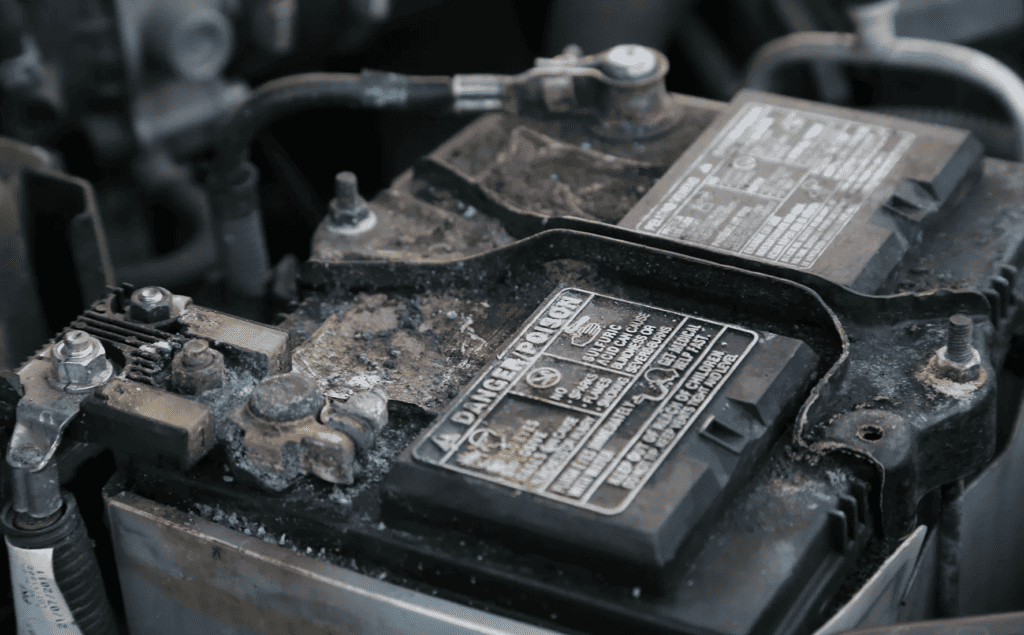Introduction: Navigating the Road with a Failing Car Battery: An Overview
Have you ever wondered what it would be like to drive with a bad battery? Most drivers overlook the importance of a healthy car battery until it’s too late. Understanding the risks, consequences, and essential safety tips can save not only money but also unnecessary stress and potential dangers on the road.
On the Edge: What Happens If You Drive with a Bad Battery
Driving with a failing battery is like walking a tightrope without a safety net. It can lead to:
1. Unexpected Breakdowns:
• Failure to Start: The most obvious and immediate risk, a bad battery may refuse to crank the engine at all.
• Sudden Stalling: Even if the car starts, a failing battery can cause it to die in traffic, potentially leaving you stranded in a dangerous spot.
2. Electrical Failures:
• Dimmed Headlights: A weak battery can cause headlights to dim, reducing visibility and safety, especially at night.
• Flickering Dashboard Lights: This can create confusion and distract the driver, increasing the risk of an accident.
• Loss of Power to Accessories: Essential accessories like air conditioning, power windows, and radio may lose power, reducing comfort and convenience.

3. Potential Damage to Other Car Components:
• Damage to the Alternator: Continuous driving with a bad battery forces the alternator to work harder, which may cause it to fail prematurely.
• Impaired Ignition System: A weak battery may provide inconsistent power to the ignition system, leading to rough running or misfires.
• Strain on Electrical System: The entire electrical system may be stressed, potentially causing long-term issues with various sensors and electrically powered components.
4. Increased Repair Costs:
• Potential Expensive Repairs: The knock-on effects of driving with a bad battery can lead to a series of repairs that might have been avoided with timely battery replacement.
• Towing Expenses: If the vehicle breaks down on the road, you may face unexpected towing costs.
5. Potential Safety Concerns:
• Increased Accident Risk: Reduced visibility due to dimmed lights and unexpected stalling can lead to accidents.
• Risk to Personal Safety: Being stranded in a remote or unsafe area due to a breakdown can be dangerous, particularly in extreme weather conditions.
Overall, driving with a bad battery is a gamble that rarely pays off. Investing in regular inspections and timely replacements is a small price to pay for peace of mind and safety on the road. Consider employing a mobile mechanic company like Uchaincs in Canada, known for professional and reliable service, to ensure your battery is in optimal condition.
Safety Under Siege: Unpacking the Risks Associated with Car Batteries
What are the inherent risks when driving with a faulty battery? They’re more concerning than you may think. Accident Risks are not to be taken lightly; a stalled engine or loss of lights can lead to accidents, potentially harming the driver, passengers, and others on the road. Stranding is another fear; being stranded in a remote or dangerous location due to a dead battery can turn a minor inconvenience into a life-threatening situation. Fire Hazards are an alarming risk too; in extreme cases, a faulty battery could even cause a fire, leading to catastrophic damage to the vehicle and potentially injuring those inside.
Besides these immediate risks, the long-term impact of driving with a weak or faulty battery can also lead to wear and tear on other vehicle components. The added strain on the alternator to compensate for the failing battery, coupled with potential damage to the electronic systems, can lead to expensive repairs down the line. All these factors underscore the critical importance of maintaining a healthy car battery and being aware of the signs of failure.
Guarding Against Hazards: Key Safety Tips for Car Battery Maintenance
Don’t let a bad battery catch you off guard. Here’s what you can do. Regular Inspections by professional services like Uchaincs can catch early signs of battery failure, ensuring that you’re never left stranded. Know the Signs and be watchful for slow cranking, dimmed lights, and warning lights on the dashboard – these are often telltale indications of a battery on its way out. Carry Essentials such as jumper cables and an emergency kit in your car; being prepared can make a big difference in a challenging situation.
Also, consider investing in a basic multimeter to check your battery voltage regularly. Understanding the proper voltage levels for your specific battery can help you spot issues before they turn into major problems. A little vigilance, combined with professional care, can extend the life of your battery and contribute to a safer driving experience.
Battery Lifeline: How Long Can You Drive with a Dead Battery
How long can you drive with a dead battery? It depends on the vehicle and circumstances, but generally, the answer is “not very long.” A dead battery puts undue strain on the alternator, which can lead to further problems. If the alternator has to constantly replenish a battery that’s unable to hold a charge, it can overheat and fail, leading to a complete breakdown.
Additionally, relying on the alternator to power all of the car’s electronic systems without the battery’s support can cause voltage fluctuations, leading to erratic behavior in everything from your headlights to your transmission. In some vehicles, you might manage to drive a few miles; in others, the car might stall almost immediately. The best advice? Don’t risk it. If you suspect your battery is dead or dying, seek professional help from a service like Uchaincs. Not only will they replace the battery, but they’ll also inspect the charging system to make sure there aren’t any underlying issues. The peace of mind is well worth the investment.
A Hidden Culprit: Could a Weak Battery Cause Your Engine to Stall?
Indeed, a weak or failing battery can lead to engine stalling. When the battery doesn’t provide enough power to the ignition system, it may cause the engine to shut off unexpectedly. This interruption in power can be more than just an inconvenience; it can create dangerous situations if it occurs while driving, especially at high speeds. Recognizing the signs of a weak battery and understanding how it can impact your engine can prevent sudden stalls and potential accidents.
In addition to the ignition system, the battery also powers various sensors and electronic components that ensure the engine runs smoothly. A weak battery may not provide consistent voltage, leading to erratic sensor readings and engine behavior. This inconsistency may not only lead to stalling but can also reduce fuel efficiency, increase emissions, and cause wear on other engine components. The bottom line? Ignoring a weak battery can have far-reaching effects on your car’s performance and safety.

Batteries and Beyond: Exploring the Potential Impact of a Bad Battery on Car Transmission
The connection between a bad battery and the transmission isn’t always apparent, but they can be related. A failing battery may lead to inadequate power for the car’s computer system, affecting the transmission’s operation. Modern vehicles rely heavily on computer-controlled systems to manage everything from fuel injection to gear shifting. When the battery’s voltage drops, it can cause these systems to function erratically, leading to rough or improper shifting, which can damage the transmission over time.
Furthermore, the link between the battery and transmission isn’t just about the electronics. A bad battery can strain the alternator, which may lead to fluctuations in electrical power throughout the vehicle. These fluctuations can affect transmission solenoids responsible for controlling fluid flow within the transmission. If these solenoids receive incorrect signals due to unstable voltage, they can cause the transmission to shift at the wrong times, leading to harsh or failed shifting. This is a hidden but real way a battery can impact more than just starting your vehicle; it plays a crucial role in the overall performance and longevity of your car’s transmission.
Conclusion: Navigating Safely: Mitigating the Risks and Consequences of a Failing Car Battery
Your car’s battery is more than a simple power source; it’s the heart of your vehicle’s electrical system. Driving with a bad battery is not only risky but can lead to severe consequences. Regular maintenance, understanding the warning signs, and seeking professional help when needed, such as from Uchaincs, can ensure that you are navigating safely on the roads.
Looking for expert car battery assistance? Trust Uchaincs, your mobile mechanic in Canada, for convenient and efficient battery care. Contact us today and drive with peace of mind!
